Do you know about the wonderful Montessori Sensorial Color Box 3? The Montessori Sensorial Color Box 3 expands upon the child’s learning from the first two color boxes. Let’s learn a little about the foundational Montessori Sensorial subject first. It will help you understand why the color box is so important as well.
Montessori Sensorial education is a cornerstone of the Montessori philosophy, focusing on engaging all five senses – sight, sound, touch, taste, and smell – in the learning process. The Sensorial materials are designed meticulously to help children explore and understand their environment through differentiation and classification.
Each material isolates a certain quality such as color, weight, shape, texture, size, sound, smell etc. These materials are presented to children in a particular sequence that matches their natural development, with each activity designed to help the child refine their senses and develop a deeper understanding of the world around them.
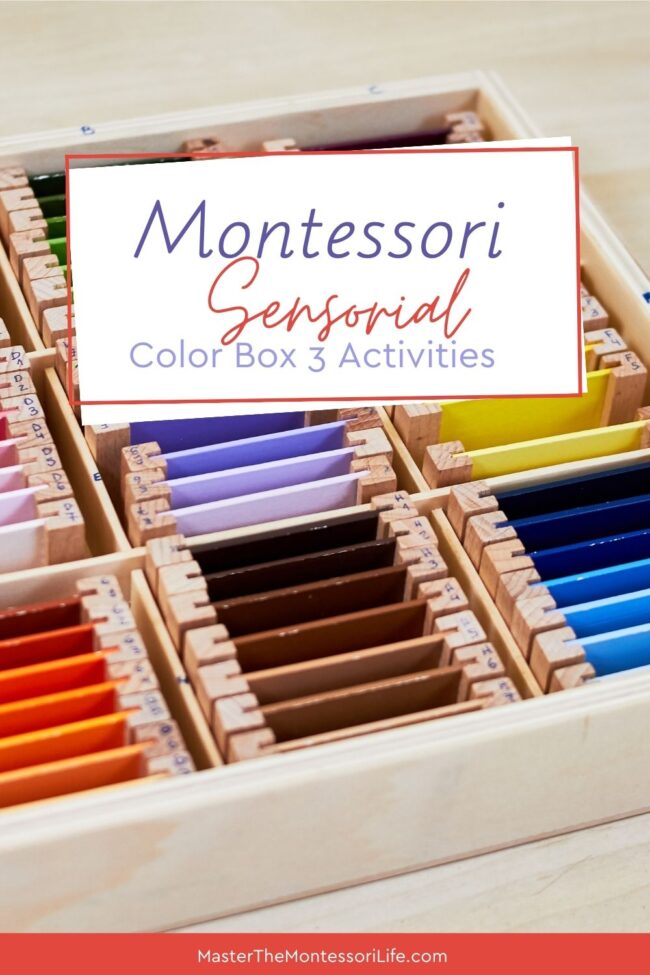
Montessori Sensorial Color Boxes 1 and 2
Montessori Sensorial Boxes 1 and 2 are integral components of the Sensorial education system. Box 1 focuses on introducing primary colors to the child through the use of painted wooden tablets. The objective of this activity is to help the child discern the differences between the colors, eventually leading to color naming and matching.
Box 2, on the other hand, extends the child’s understanding of colors. It introduces the concept of color gradation, featuring tablets that range from light to dark shades of blue, pink, and brown. This activity enables the child to differentiate between shades of the same color, thereby enhancing their visual discrimination skills.
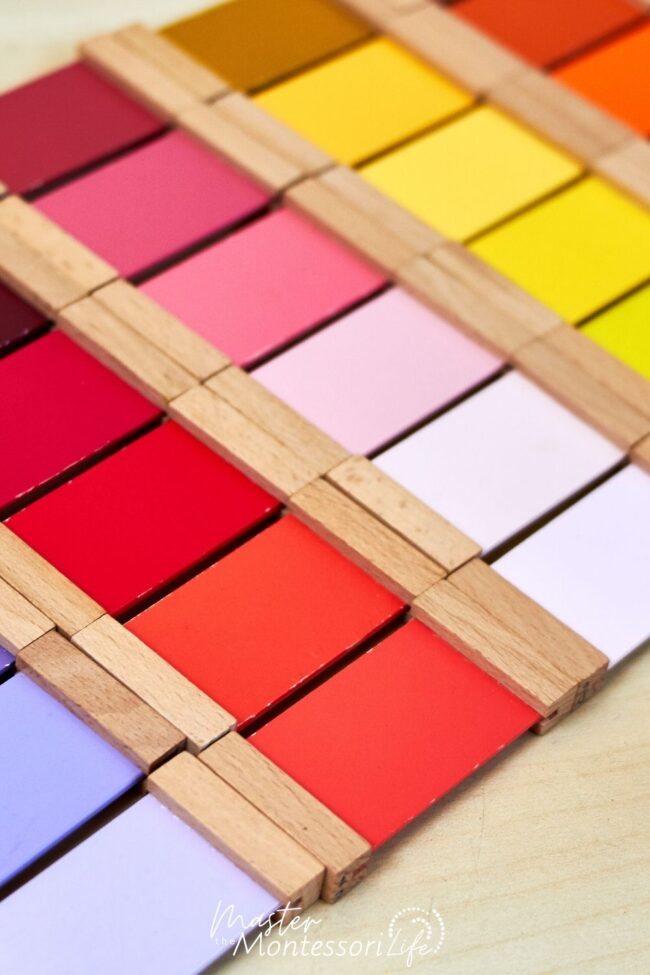
Montessori Sensorial Color Box 3
The Montessori Sensorial Color Box 3 activity builds on the knowledge acquired through previous activities. It introduces secondary colors such as orange, violet and green, through a series of six color tablets. The concept of combining two primary colors to make a new color can be explored by mixing the tablets from box 1 and 2. This activity encourages creativity and allows the child to experiment with colors, while also teaching them how to mix colors to create new hues.
This sequencing of activities helps the child to cultivate a more advanced understanding of color. It is important that children are able to differentiate between various shades and comprehend the concept of gradation within their environment from an early age. Such skills serve as the foundation for more complex and abstract concepts, while also helping them to identify and understand colors in their everyday lives.
The Montessori Sensorial Color Box 3 expands upon the child’s learning from the first two color boxes. It is composed of 63 color tablets representing nine different colors – each color represented in seven different shades. The colors include red, orange, yellow, green, blue, purple, pink, gray, and brown.
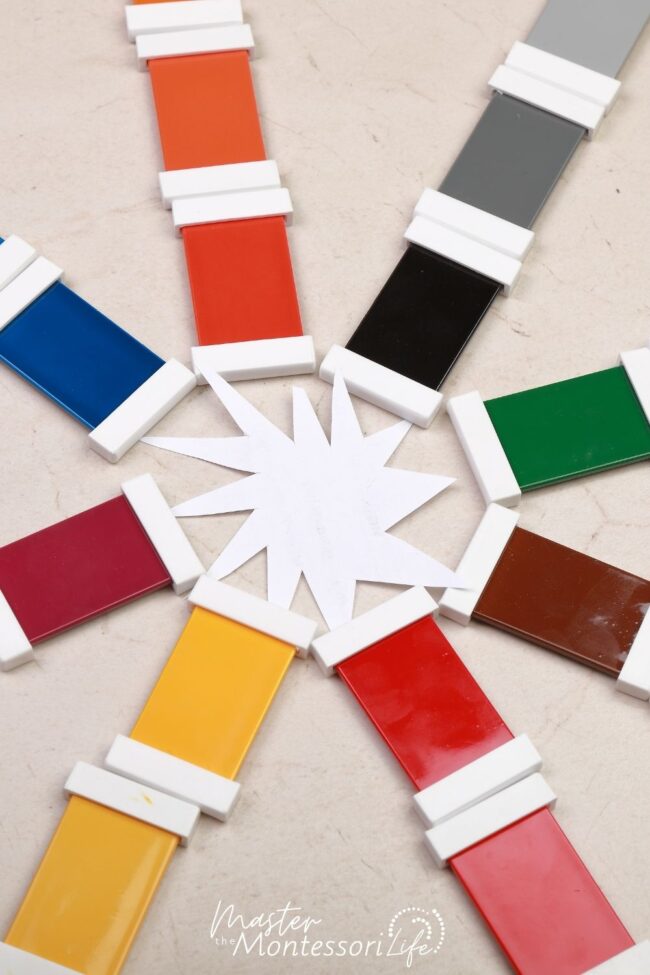
Montessori Sensorial Color Box 3 Activities
The aim of this box is to develop the child’s ability to differentiate and classify colors based on their shades. The child is encouraged to arrange the tablets in gradients from lightest to darkest, helping them to appreciate subtle differences in hues. This exercise not only refines the child’s sense of sight, but also enhances their concentration, patience, and fine motor skills.
The Montessori Sensorial Color Box 3 activity is a fun way of introducing children to color exploration, laying down the groundwork for a lifelong appreciation of color theory. Offering a hands-on approach to learning, this activity is sure to engage children of all ages and foster a deeper understanding of the world around them.
The box also comes with a handful of activity cards that offer more creative ways to explore colors. For instance, the children can mix red and yellow tablets together to create orange. They can then compare their creation to the corresponding tablet from the box. Also, they can appreciate how two primary colors combine together to form a new one.
From creating mosaics to experimenting with different hues, the possibilities with this activity are endless. Through these activities, children can gain insight into color combinations and contrasts, while also having fun at the same time.

Montessori Sensorial Color Box 3 Activities + Lesson Plan
$2.99
This Montessori Sensorial Color Box activity is going to be educational for the children and the lesson plan will help you.
Children will enjoy this visual lesson in the Montessori Sensorial subject.
Get the lesson plan and the printables for the Montessori Sensorial Color Box 3.
EU buyers, go here.
Key Takeaways:
- Montessori Sensorial Color Box 3 activity introduces secondary colors (orange, violet, green) through a series of six color tablets.
- By mixing the tablets from boxes 1 and 2, the concept of combining two primary colors to make a new color can be explored.
- This activity encourages creativity and helps the child differentiate between shades of the same color, while teaching them how to mix colors to create new hues.
- It is important that children are able to discern various shades and comprehend the concept of gradation within their environment from an early age.
Montessori Sensorial Color Box 3 Activities + Lesson Plan
Overall, the Montessori Sensorial Color Box 3 is a great way to foster creativity. It will also refine color recognition in young children. It helps them to explore colors more deeply, appreciate their nuances, and understand their relationship to the world around them. Whether in the classroom or at home, this color box is sure to provide stimulating activities. They will help children learn about colors in a fun and engaging way.
The Montessori Sensorial Color Box 3 is an essential part of any young child’s education. It is offering valuable opportunities for learning and exploration. Through its activities, this box helps children gain a deeper appreciation of colors and their application in everyday life. With its hands-on approach to learning, this activity is sure to provide your child with an enjoyable and meaningful experience that will stay with them for years to come.
With the Montessori Sensorial Color Box 3, you can be assured that your child’s interest in colors is nurtured. Also, their knowledge of color theory is reinforced. This activity provides the perfect platform for children to explore, experiment, and have fun as they learn!
Children will enjoy this visual lesson in the Montessori Sensorial subject.

Montessori Sensorial Color Box 3 Activities + Lesson Plan
$2.99
This Montessori Sensorial Color Box activity is going to be educational for the children and the lesson plan will help you.
Children will enjoy this visual lesson in the Montessori Sensorial subject.
Get the lesson plan and the printables for the Montessori Sensorial Color Box 3.
EU buyers, go here.
More Sensorial Resources:
You might also enjoy these relevant topics:
- Unveiling the Beauty of Montessori in the Environment
 In the world of Montessori education, aesthetics, also known as the beauty of Montessori, do a lot more than just make things look nice.
In the world of Montessori education, aesthetics, also known as the beauty of Montessori, do a lot more than just make things look nice. - Teaching Addition the Montessori Way: A Guide to Making Math Engaging for Children
 This blog post will explore three key points that outline the Montessori method of teaching addition.
This blog post will explore three key points that outline the Montessori method of teaching addition. - Teaching Sight Words the Montessori Way
 This training will explain how parents and teachers can use the Montessori approach to teaching sight words in an effective and engaging way.
This training will explain how parents and teachers can use the Montessori approach to teaching sight words in an effective and engaging way.








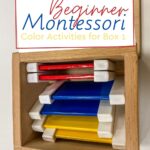
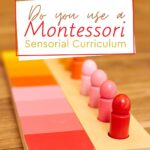

Leave a Reply